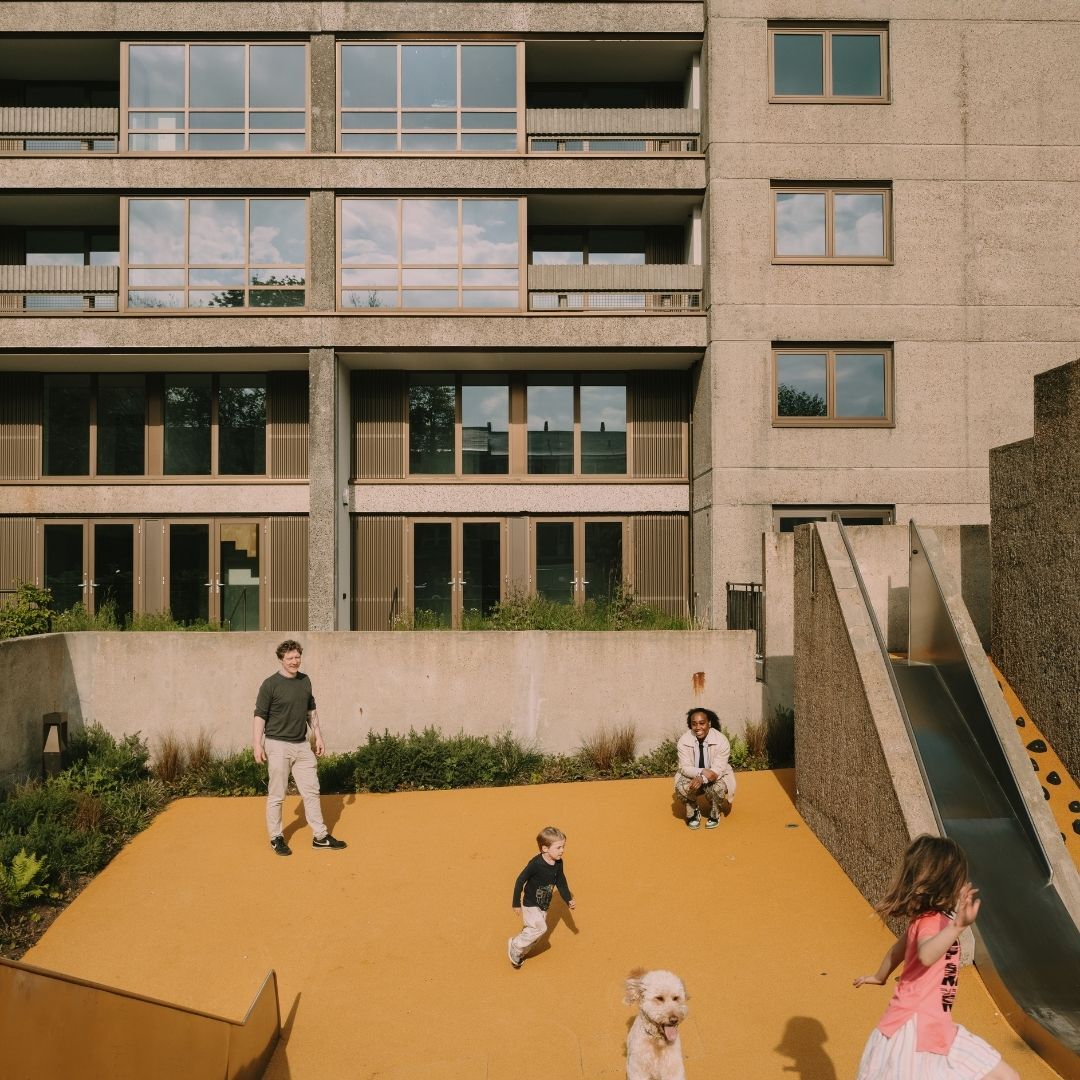Get updates from The Developer straight to your inbox Yes, please!
Balfron Tower, London Borough of Tower Hamlets, for Poplar HARCA and Telford Homes, with Studio Egret West and Ab Rogers Design

The 27-storey Balfron tower in Poplar, part of the Brownfield Estate and sister to the Trellick Tower in West London, has been retrofitted with a conservation-informed approach. The £57m renovation of the Grade-II tower and its 146 apartments includes improvements to the public realm that contribute and reinstate the character of the original designs.
Who is on the project team? (designer, consultants, etc)
Architect: Studio Egret West Interior Designer: 50/50 collaboration between Studio Egret West and Ab Rogers Design Contractor: Telford Homes Planning Consultant: Company: DP9 Services Engineer: Scotch Partners Structural Engineer: Heyne Tillett Steel Heritage Consultant: Richard Coleman City Designer Historic England
Describe the context of this project, its neighbourhood and people.
Balfron Tower – a 27-storey tower in Poplar, East London – part of the Brownfield Estate and the sister tower to Trellick Tower in West London, was designed by Hungarian Architect Erno Goldfinger. It was originally built between 1965 and 67 by the Greater London Council and was an icon of Post-War social housing and Brutalism. The 146 apartments were originally occupied by council tenants – some later went on to purchase the leaseholds. In 1968 Goldfinger and his wife moved into the tower for 2 months to find out first- hand what the residents thought of the space. He later used his learnings for his design for Trellick Tower. In the 1980s public money allocation for social housing was pulled and the tower began to fall into disrepair. But a renewed interested and respect for Brutalism stood in its favour and saved it from demolition. In 1996 it was Grade II listed and then in 2015 it was upgraded to Grade II*. In December 2007, Tower Hamlets transferred its ownership of the building to housing association Poplar HARCA. Studio Egret West, through a competitive process, won the task to transform the building. Through a ‘conservation informed’ and landscape led approach, the retrofit of the iconic tower and its 146 apartments is now complete (April 2023). A small number of original leasehold tenants have now moved back in as of December 2023. Property Management Company, ‘Way of Life’, manages the private rental of 140 homes available from January 2024.
How does this project make use of an existing structure, place or building in a creative way? Is it innovative? How will this project continue to evolve or enable future flexibility and adaptation? Have you considered its resilience?
The expose concrete structure has been retained. This is for heritage reasons - it is iconic on the London skyline and Grade II* listed and for environmental reasons- the embodied carbon is locked in and use of new materials thus reduced. One of each of the original flat typologies has been reinstated to Goldfinger’s original layout, preserving his original vision for future generations. The communal rooms in the former utility tower, realising Goldfinger’s unbuilt vision, now offer a space for residents to socialise with neighbours outside of their private dwellings – these include a cinema, yoga space, dining and kitchen space, gym, library and private roof terrace. A new communal garden, on the roof of the main building is now available to all residents where they can enjoy all round views of London. Cold bridging has been eradicated by cladding internally and each flat has under floor heating. In collaboration with BRE, we produced an innovative in-depth ‘Surface Condensation Risk Analysis. Aerogel is used at critical glazing interfaces, providing a high insulation with a thin profile. The BRE used finite element software to model our external wall build ups to avoid cold bridging. Each flat is fitted with sprinklers and a FD60 steel door. Ceiling slabs and cross walls have been coated in a fire-retardant coating. A door has been fitted halfway along each corridor – to maximise the use of two separate fire escape exits at either end of the building.
What is the environmental impact of the project? How will the carbon use and material impact of the development be mitigated? What is the sustainability strategy?
Prior to the refurbishment, the flats had a carbon footprint four-five time what would be allowable in Building Regulations today and a heating demand two-to three times the allowable maximum. The building is now BREEAM ‘Excellent’ and Part L compliant and each apartment has an EPC rating of B. In 2007, at transfer, the homes at Balfron were run down and not fit for purpose. Former residents were given the opportunity to move to new, improved properties. 95% of former residents still live within a mile of Balfron and this project has helped to facilitate the regeneration of the adjacent Brownfield Estate. The new landscape expands to improve the rest of the Brownfield Estate, providing a range of environments each characterised by subtly different botanical curiosities helping to distinguish between public and private space. Public consultation helped to inform the design of the new square and playground. The new public square at the base of Balfron Tower incorporates the existing Community Centre, and the new square is open to all, allowing connections to form with the adjacent residents. The playground, which had been unsafe, anti-social and closed in, is now transformed into a modern, state of the art play space, with new slides, climbing walls and a rubberised floor finish to soften its use and appearance.
Sign up to our newsletter
Get updates from The Developer straight to your inbox
Thanks to our organisation members
© Festival of Place - Tweak Ltd., 124 City Road, London, EC1V 2NX. Tel: 020 3326 7238